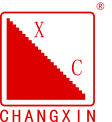Nowadays, there are more and more companies and businesses selling furnace lining materials, and the prices are also varies. How to identify the quality of furnace lining materials and how to select furnace lining materials have become problems faced by foundry companies. They are usually tested and used, but this virtually increases the cost and risk of testing. The role of furnace lining cannot be seen immediately.
When using induction furnaces, the key is to select appropriate furnace lining materials and pay attention to all aspects of lining pounding and smelting. This can prevent accidents, increase the age of the furnace, reduce the number of construction times, save the costs of pounding, furnace disassembly and baking, and reduce overall costs. To reduce production costs and improve the economic benefits of enterprises, furnace lining materials are made through scientific and reasonable proportioning, measurement and weighing, and sufficient mixing. It is widely used in continuous operation and intermittent operation environments where ferrous metals are smelted in medium frequency electric furnaces. This material is a premixed dry ramming mixture that users can put into use directly. The product is suitable for a melting temperature of 1850°C.
The knotting quality of the furnace lining directly affects the service life. The knotting quality of the furnace lining is related to the sintering quality, and the sintering quality affects the performance. When knotting the furnace lining, the sand material remains uniform in particle size, and the coarse and fine particles do not segregate. When adding materials, the layers are tightly combined. The density of the knotted furnace lining is high, and the strength of the sintered layer after sintering is high. The tendency of furnace walls to crack is relatively small. Inadequate vibration when the furnace lining is knotted will cause the furnace lining to be loose or partially loose. When the metal liquid pressure is high, leakage may occur. After one layer of knotting is done by hand, adding materials without loosening the surface will cause delamination, and transverse cracks will occur during use, which cannot be bridged. If the temperature rises too fast during the oven and sintering processes, the moisture in the charge will escape rapidly and form many micropores on the furnace wall. These micropores may cause the penetration of molten metal and adsorption of slag.
The service life of furnace lining is “three-thirds depends on the material and seventy-percent depends on the use.” To effectively improve the service life of furnace lining materials, in addition to selecting furnace lining materials of suitable materials, implementing strict furnace building and baking operations, formulating scientific and reasonable smelting processes, selecting new auxiliary materials, careful operation, and careful maintenance are all improvements. Furnace lining life is an effective way to save energy and reduce consumption.
More details about induction furnaces:
What is the benefit of induction furnace?
It has no electrodes and electric arcs which allow the productions of steel & alloys low in carbon and occluded gases without any quality problem. Low melting losses & alloying elements. High power efficiency, therefore, cost-effective.
How does a induction furnace work?
In the induction furnace, a coil carrying alternating electric current surrounds the container or chamber of metal. Eddy currents are induced in the metal (charge), the circulation of these currents producing extremely high temperatures for melting the metals and for making alloys of exact composition.
What are the two main types of induction furnaces?
Induction furnaces are ideal for melting and alloying a wide variety of metals with minimum melt losses, however, little refining of the metal is possible. There are two main types of induction furnace: coreless and channel.
What are the disadvantages of induction furnace?
There is only one big negative feature. An induction furnace does not have a refining capacity. The materials placed in an induction furnace must be clean of oxidation products and be a known composition. Because of this, some alloying elements may be lost due to oxidation and require to be re-added to the actual melt.
